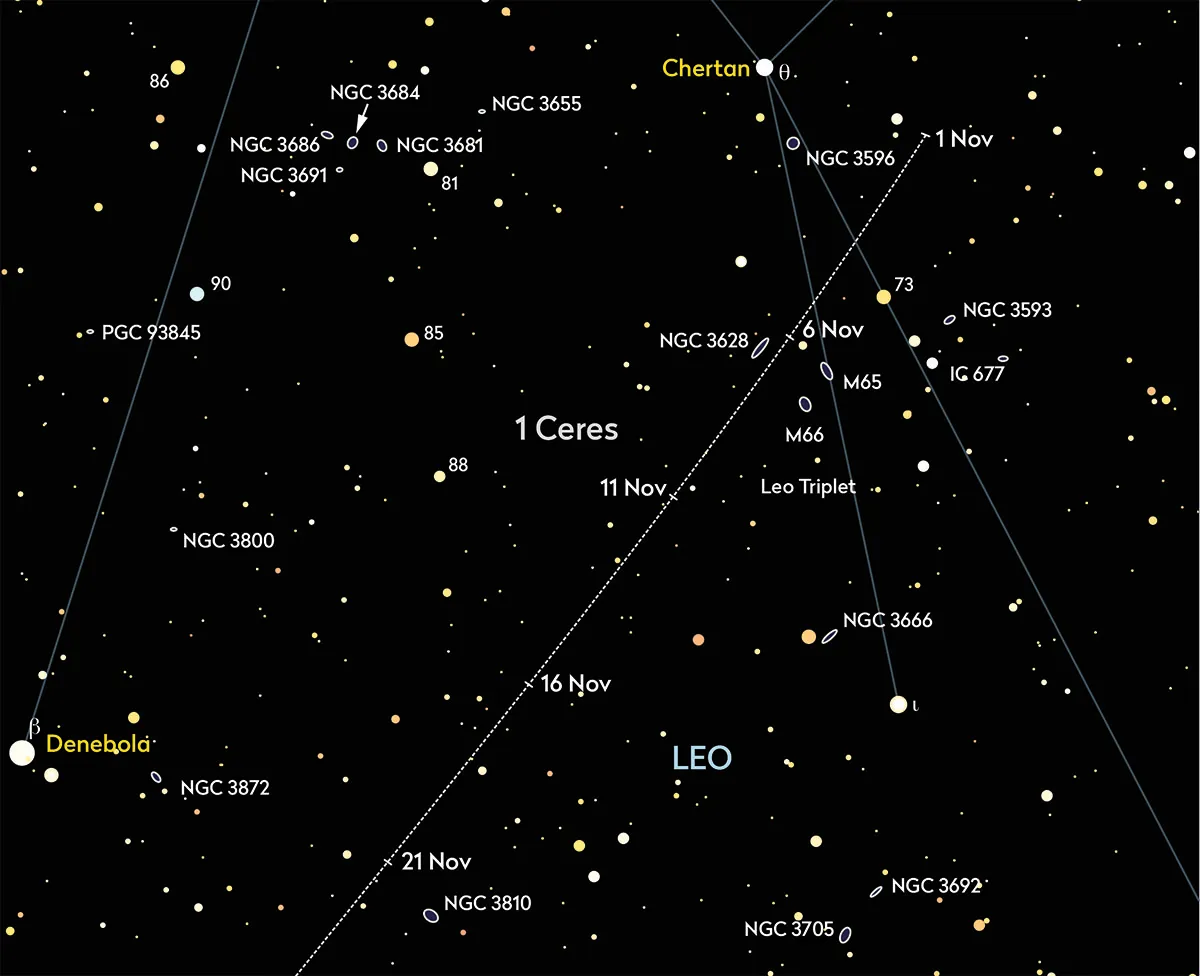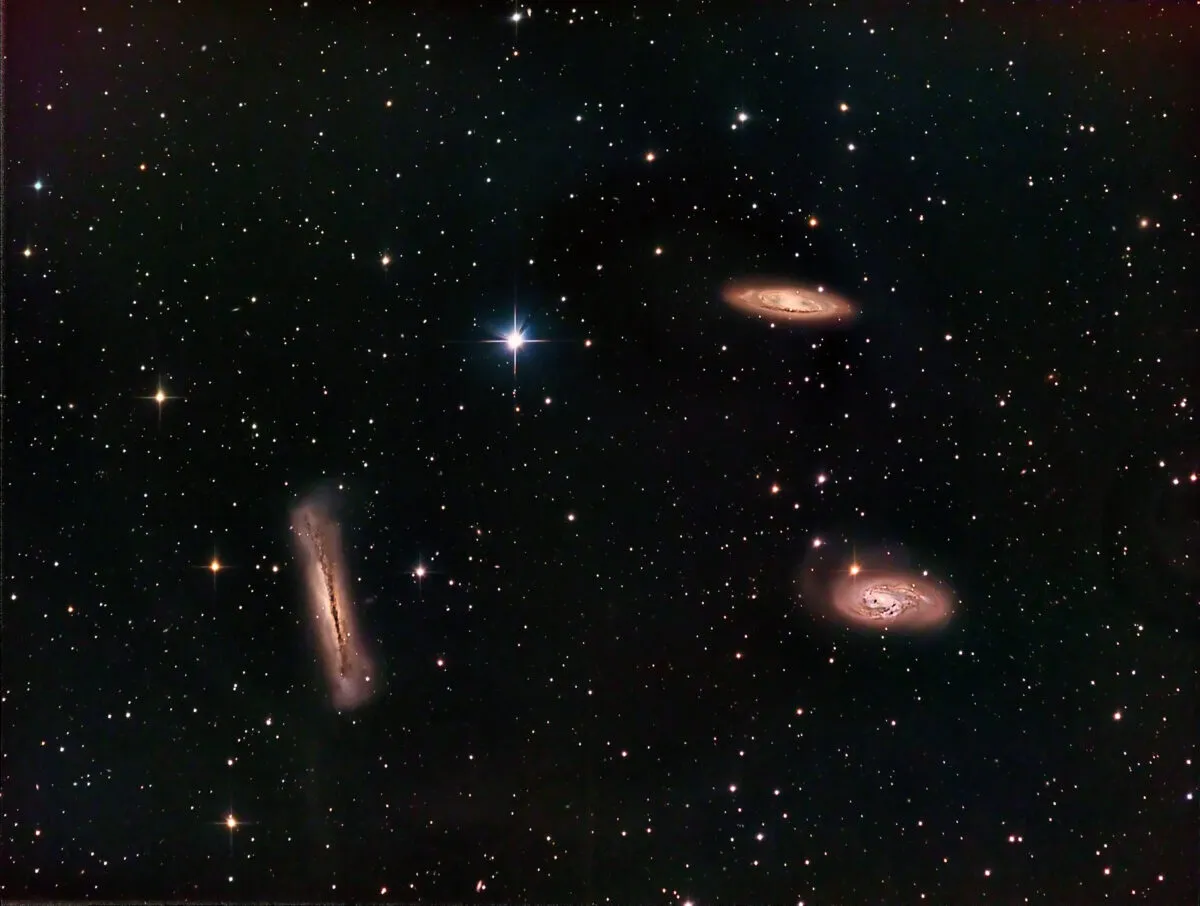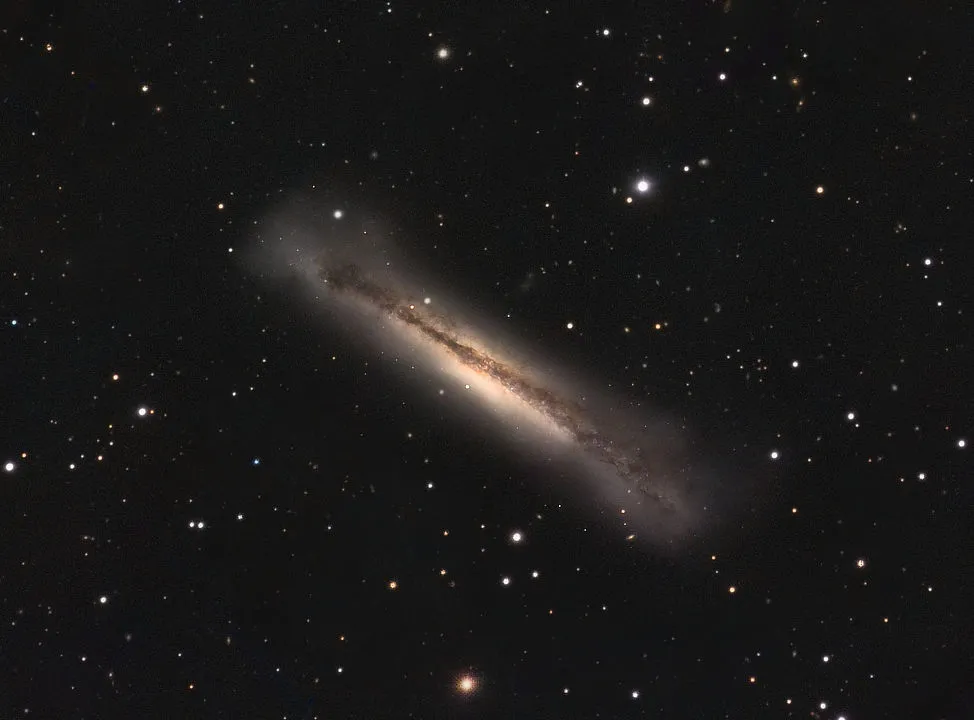Dwarf planet Ceres is moving through the constellation Leo this month, appearing like a mag. +8.8 star but moving over time.
The best time to see Ceres in Leo will be 1 - 10 November.
On the morning of 1 November at around 03:00 UT it sits 19 arcminutes south of the mag. +6.3 star HIP 54688.
For more astronomy advice, listen to our monthly Star Diary podcast or sign up to receive the BBC Sky at Night Magazine e-newsletter.

From here it makes its way east-southeast through Leo, toward, through and beyond the famous Leo Triplet, a collection of three distinctive galaxies – mag. +9.6 M65, mag. +9.7 M66 and mag. +10.4 NGC 3628 – near the Lion’s back leg.
At 03:00 UT on the morning of 3 November, Ceres sits 1.5° south of Chertan (Theta (θ) Leonis) and 1.2° west-northwest of the Triplet, moving toward the Triplet.
On the morning of 6 November it begins its passage between the northern member NGC 3628 and the southern pair M65 and M66.

NGC 3628 is known as the Hamburger Galaxy, its distinctive almost rectangular appearance, with a dark dust lane running along its centre, appearing like the popular fast food seen side-on.
The passage is brief, Ceres taking a day to cross the apparent width of NGC 3628.
On 7 November at 03:00 UT, it lies around 9 arcminutes from the core of this galaxy.

A view of the general area on the morning of 8 November shows Ceres just east of the Triplet and now east-southeast of NGC 3628.
At 03:00 UT, it appears separated from NGC 3628 by about the same distance as that between M65 and M66.
Ceres continues east-southeast, a bright Moon now interfering with the view.
On 21 November, Ceres lies 40 arcminutes north of mag. +11.4 galaxy NGC 3810.
This guide originally appeared in the November 2022 issue of BBC Sky at Night Magazine.
